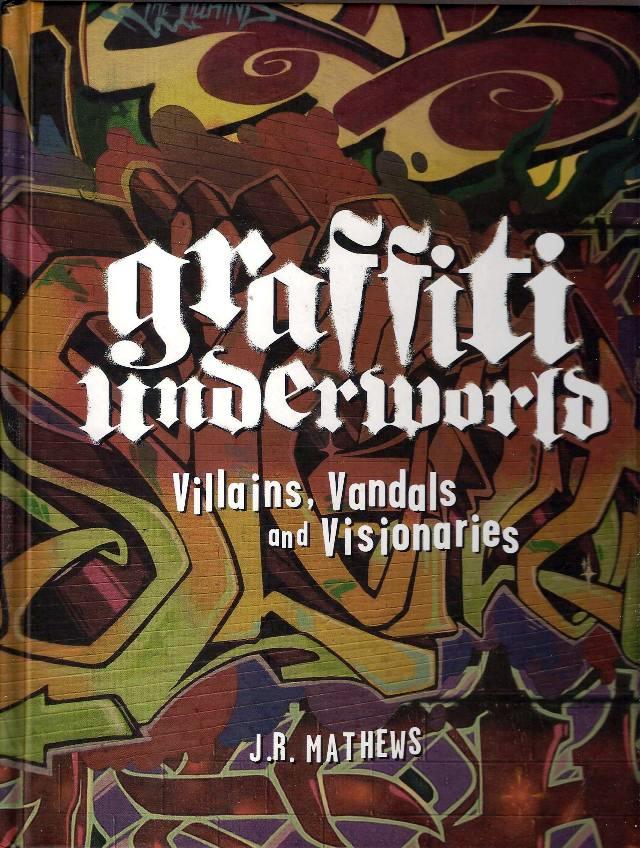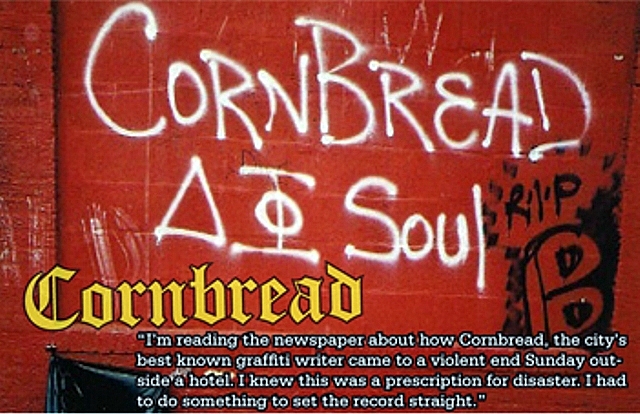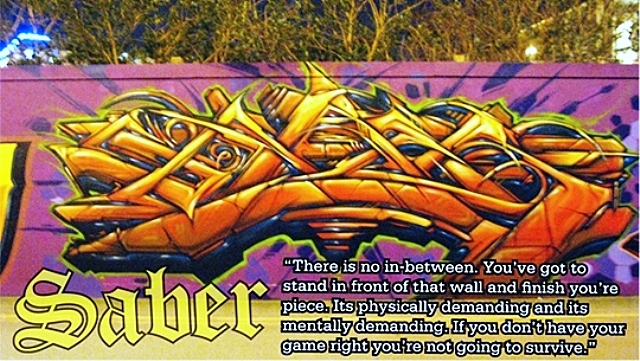
As the lines between graffiti and street art continue to blur, Graffiti Underworld: Visions, Vandals and Visionaries reminds us just how distinct the two worlds are. Although both graffiti writers and street artists claim the streets as their own, their social and cultural backgrounds, motivations and sensibilities share little in common. Based on five years of interviewing and photographing writers throughout the U.S., J.R. Mathews — in this collection of oral histories — offers a fascinating foray into the minds of graffiti writers.
Particularly striking is the role that drama plays in the writers’ lives. Daily ventures often involve: running from cops, outsmarting the authorities, climbing treacherous heights, going all-out for quantity – often at the expense of quality — claiming territory, jumping on moving vehicles and courting danger. These are all elements of the adrenaline rush cited by many. And although most writers have frequent encounters with police, they often find in graffiti “a way out of the neighborhood…gang activity and all.”

Also striking are the initial motivations. Many writers are driven to make their mark in a quest for recognition or fame. Philadelphia’s Cornbread – deemed as the founder of modern-day graffiti – began writing Cornbread while incarcerated at a juvenile detention facility. He loved the instant fame and continued to get up all over Philly when he was released back in 1967. “There was Cornbread before there was hip-hop,” he says.
Graffiti clearly had — and continues to have — much to offer those who feel most marginalized. “Graffiti was the perfect outlet for a young guy trying to challenge this world,” suggests Saber. “Graffiti is the perfect opportunity to find a voice. Otherwise you would never find a voice.”

Interesting, too, are the surfaces favored by writers. Trains – particularly freight trains — are the canvas of choice for many graff writers. Seattle’s Asic explains, “I think it’s partially the nostalgia freights have, the open road, roaming the land. Painting them and seeing them leave, not knowing where they’re going and seeing them pop up is amazing.”
And unlike interviews conducted with street artists, there are hardly any references to art schools or galleries and lots of talk about devising and revising names and identities. (I must admit I was disappointed when I found that “Read More Books” wasn’t intended as a message!) But there are expressions of extraordinary passion, zeal and commitment from members of an underground movement that has transformed the contemporary art scene.
Graffiti Underworld: Villains, Vandals and Visionaries is worth a read for anyone curious about the largely unsung “urban style-masters of the now generation.”
Cornbread, incidentally, will be honored this Sunday at the Rotunda in Philadelphia — an event certain to attract other legendary writers.
Images courtesy of Feral House and Amazon
